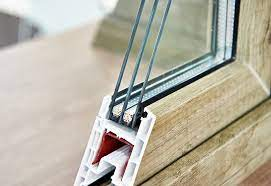While it may seem as though double glazing is a new development and the latest fad, it actually began way back in Victorian times. Homeowners in Scotland would add a second pane of glass to their windows to help protect them from the harsh Scottish weather, however, this was not quite the same as the modern double glazing that we see today.

It wasn’t until the 1970s that double glazing really took off. This was due to changes in the rules on energy costs that forced homeowners to look at ways of reducing their heating bills. This led to many people looking at uPVC as an alternative to aluminium. uPVC is cheaper, and at the time was also more durable than aluminium. This made it a much more accessible option for the average family. For Evesham Double Glazing, contact Firmfix, who provide Evesham Double Glazing services.
There are a few different claims as to where and when double glazing was first invented, but it is widely accepted that C.D Haven invented what is now considered to be modern double glazing back in 1930. This was then patented by the Libbey-Owens Ford Glass Company of Toledo, Ohio and became known as Thermopane. This was the first double glazed window to reduce heat loss and prevent interstitial glazing condensation.

This caused Thermal Pane double glazed windows to become a popular choice in homes throughout America for the next 40 years or so. However, it was not until the 1970s that the UK saw a surge in double glazing. This was largely due to strict new laws regarding home energy efficiency, which meant that it was no longer acceptable for people to rely on traditional methods of keeping warm such as open fires and gas central heating. This led to households adding patio doors and conservatories and replacing their existing windows with the more efficient double glazed alternatives.
uPVC was introduced to the UK in the 1980s and soon replaced aluminium as the favoured frame for double glazing. It is more resistant to corrosion than aluminium, which means that it does not need painting or treating with chemicals. It also provides a much better thermal performance than aluminium, so that your home stays warmer in winter and cooler in summer.
During the colder months, the Argon gas inside the internal pane of your double glazing slows the transfer of warmth from the outside to your interior. In turn this keeps the room warmer and also helps to reduce noise.
